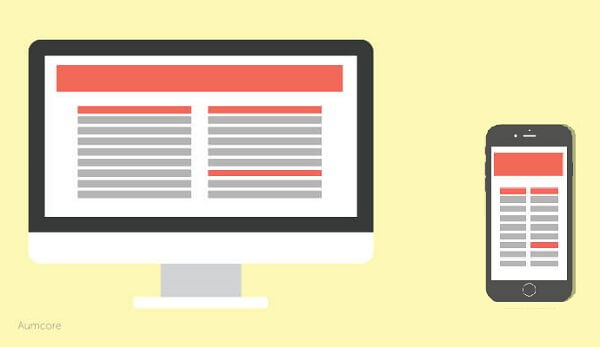In the United States, users spend 71% of their time surfing the web with a mobile device. That’s around 5 hours of your day dedicated to mobile browsing! The shift to mobile usage has become much more than a trend, it’s become the norm.
From a business standpoint, mobile marketing is the next set of keys to the kingdom because it’s how you’ll reach your audience while they’re on the go, literally looking for answers. When users are searching for something on their mobile device, they have a 75% chance of acting upon it. This is why it’s so important to create a mobile PPC strategy with AdWords mobile.
The complexity of SEO and SEM has intimidated many small and medium business owners. SEO and PPC services can be hard to trust when you aren’t exactly sure what you’re looking for in a digital strategy. Alas, do not fret! This guide will help you lay a foundation for your brand’s mobile AdWords strategy.
Understanding Google Mobile Indexing
At the beginning of last year, Google announced it would be paying more attention to how websites appear on mobile devices. Their blog update stated:
Today, most people are searching on Google using a mobile device. However, our ranking systems still typically look at the desktop version of a page’s content to evaluate its relevance to the user. This can cause issues when the mobile page has less content than the desktop page because our algorithms are not evaluating the actual page that is seen by a mobile searcher.
Since then, Google’s mobile first indexing has largely influenced search results. You can even test it yourself. Google, best restaurants near me, on your desktop and phone, and you’ll see a lot of the same results, but what you should notice are the variances that appear. This is Google’s mobile indexing in action, pulling the most relevant content from across the web to cater to your specific query, based on the device you’re using.
Step by Step
Focusing on this avenue of digital marketing (mobile advertising) will help your business become more visible to users who want your goods and services, and the best part is they’re already looking for them. So how exactly do you get your content to be the most relevant for your audience so it starts ranking on SERPs? The answer is through using mobile paid search and mobile AdWords.
Eyes on the Prize
When you finally accomplish something after working at it for a long time, it’s the most satisfying feeling. Remember the first time you rode a bike; how exhilarating it was to fly down the pavement? Or maybe the first time you learned how to swim without floaties on? These things don’t just happen, they take a bit of time.
The same things apply to your pay per click strategy, and if you’re asking for help from an agency for PPC services, the results won’t kick in immediately. They will slowly manifest themselves into the web, and Google will eventually pick up on them. Set your mark, but remember to set goals that are realistic for your time, effort, and budget.
Tracking Your KPIs
After determining your mobile PPC goal, you need to decide what your key performance indicators (KPIs) are. In other words, how will you measure the success of your campaign? Since you’ll be running a PPC campaign, the main KPIs you’ll want to track are:
- Clicks: how many times users actually click on your ads. Tracking your total number of clicks is important because it tells you that the content your team is putting out is good. Users click when the results are relevant to their query, and if they’re clicking on your ad, then it’s a pretty good indication that what you’re putting out is useful to them.
- Click-Through Rate(CTR): your total number of clicks divided by your total number of impressions. Let’s say your total number of clicks is 100 and your impressions are 1,000. In this instance, your CTR is 10%. This metric let’s your team gain an understanding of size and action. Out of 1,000 impressions that were made on your ad, 100 clicks were made. It’s a great benchmarking indicator and it’s also an important part of your Google quality score.
- Cost-Per-Click (CPC): this is how much each click is costing you. You can find this by going to your “Campaigns” tab in Google AdWords and looking at your “Avg. CPC” column in the keyword planner. This will tell you if the keywords you bid for are worth it, or if you should change them.
Keep these metrics in mind while you’re running your PPC campaign because they will help you understand your current standing. If it’s successful, cheers to you! Keep doing what you’re doing! But if you notice a negative trend, there’s absolutely no shame in re-visiting the drawing board to regroup.
Defining Your Audience
Just like any other ad campaign, your strategy has to be catered specifically to your audience. In the digital world, this is a little more than just thinking about the 5 Ws as a generality. Your team needs to think about the 5 Ws in terms of mobile search:
- Who they’re searching
- What they’re searching
- When they’re searching
- Where they’re searching (In this case it’s a mobile device)
- Why they’re searching
Get into the mindset of your target audience to better tailor your PPC strategy. The more you understand, the better position you can turn your business into their answer.
The Keywords to Your Digital Kingdom
Your keywords are the most important part of your PPC campaign because they’re how Google knows which users to place your ad in front of. If your team bids on the words “Italian restaurant,” and a user searches for “Italian restaurants near me,” Google will know that specific user is looking for a business like yours.
Immediacy of information is the expectation. According to Think with Google, when users are searching on the go, more than half intend to make a purchase within the hour! That’s why understanding your audience’s search intent is a crucial part of the game.
Website Optimization for Mobile
Research shows that users will begin their research using mobile devices, and then transition to desktop in order to make their actual purchase. What this means for you, dear business owner, is that you need to show consistency across devices. Your landing pages should be tailored to your user’s intent, just like your ads and your keywords.
Google AdWords mobile ads best practices want AdWords users to know that in order to deliver the best possible experience, you should, “align mobile landing pages with a customer’s place in the purchase journey.” Another way you can help optimize your site for the mobile experience is by using Ad Extensions. For mobile preferred ads AdWords, what this will do is deliver additional info and provide alternate ways for customers to interact with you. You want to be as available on mobile devices as you can so your audience can have ease of access to all the information they need from you.
Scroll Up: Tip Recap
Hopefully these basics will help you gain a solid understanding of how to jumpstart your mobile PPC strategy. It may seem like a lot at first, but no one goes in knowing absolutely everything. Sometimes it just takes a bit of clicking around to figure out what works best for your unique business goals. Let’s look at those tips one more time to really pack them into your memory:
- Keep your eyes on the prize by setting a goal that’s realistic for your time, effort, and budget
- Track your KPIs to stay more informed about where your strengths and weaknesses are in your PPC campaign
- Define your audience to craft ads with user intent in mind
- Utilize all the research you did on your audience to inform your keyword bids
- Create a cohesive experience for your users by keeping consistency across your landing pages
If you need help with any of these steps or require expert PPC services to guide you along your mobile AdWords journey, don’t hesitate to reach out to the Aum team! We’re always here to help.






